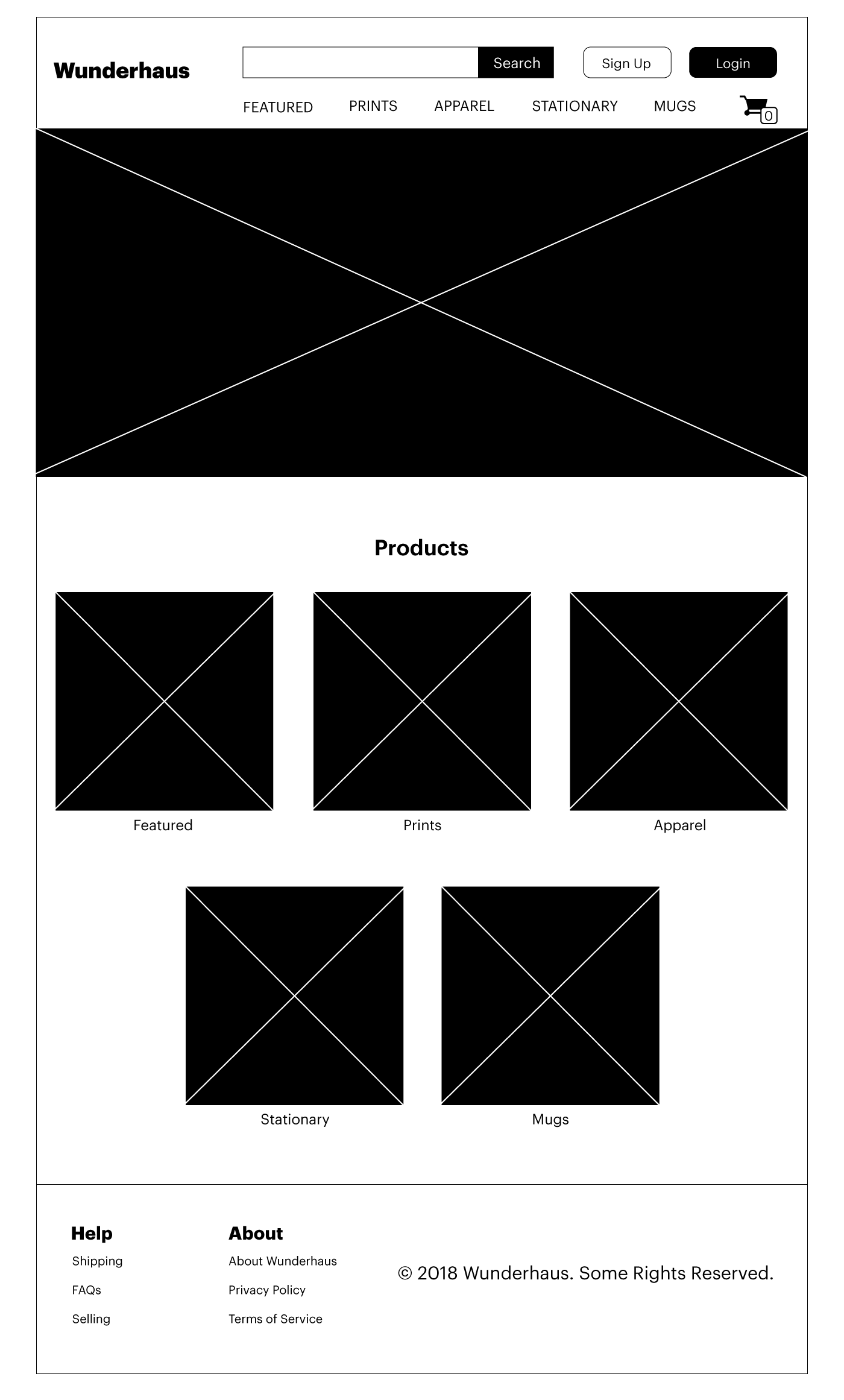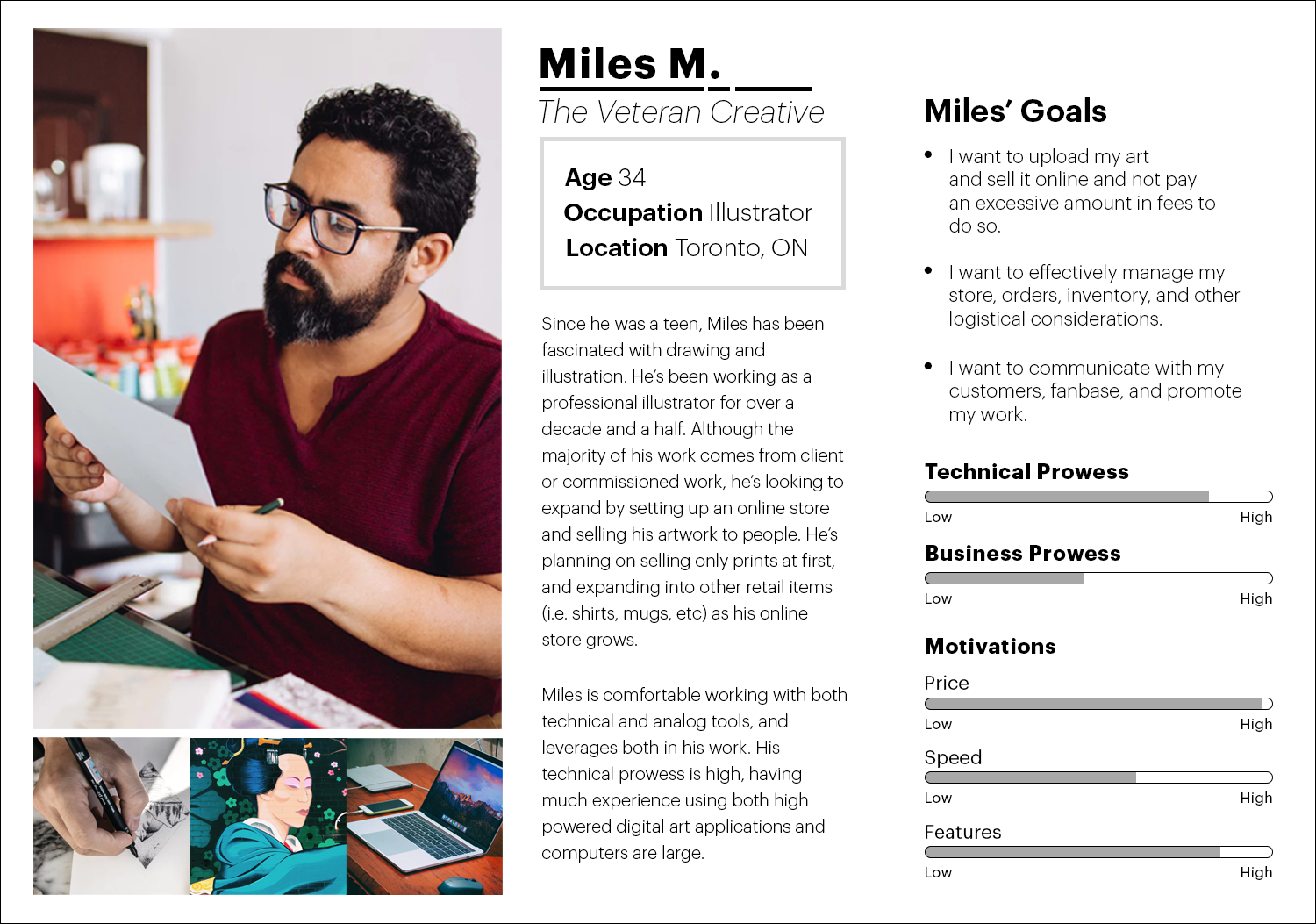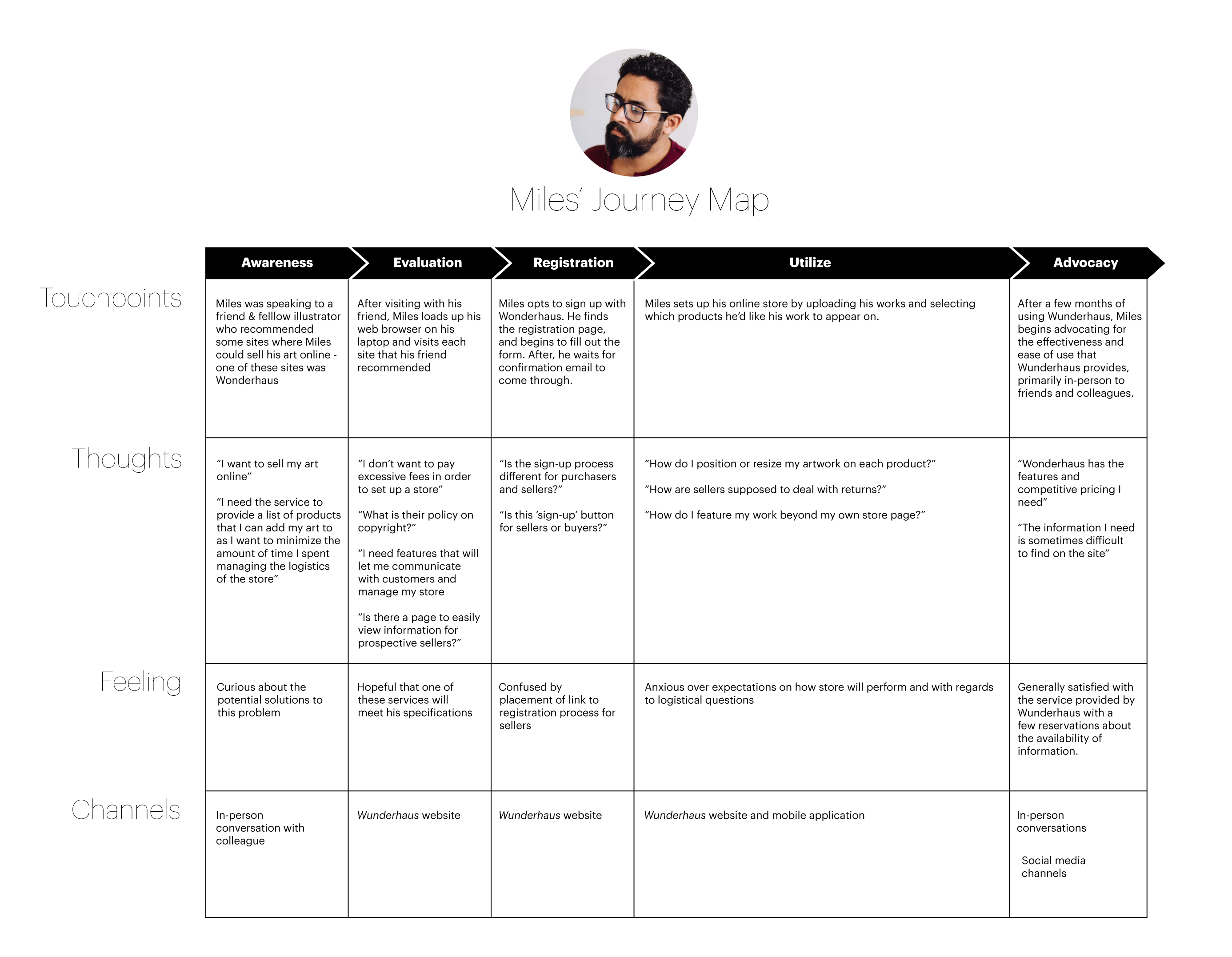In a previous article, I briefly mentioned the importance of communication
and UX research in design. Reaching out to your users (or potential users) is critical to improving the usability and design of any project. But once UX research is completed, how can we leverage our findings into usable information? One extremely
popular way of using findings from UX research is to create personas and journey maps. Both personas and journey maps can help to clarify user needs and goals, and who your users actually are. They can also reveal potential issues in design, information
architecture, or even content.
What is a persona?
In short, a persona is a fictionalized representation of a user. While personas are created using the observations and user research drawn from many people, personas are not conceived of as an abstract idea - they are a specific individual. Typically
they represent a significant portion of your user base. Personas force designers to think about their designs as they pertain to specific (albeit fictionalized) people with their own unique goals and characteristics (although often these goals and
characteristics are usually representative of a subset of users).
Personas are given characteristics that help to shape and define them: a name, age, occupation, technical prowess, accessibility needs, and key goals (to name a few). Key goals are typically given in the form of “I…” statements so that
they are presented from the viewpoint of the persona in question.
It is critical to note that personas should not be entirely qualitative - quantitative user research and web analytics are critical to creating an effective persona. Moreover, personas should always be created with some degree of UX research done to backup
and justify the characteristics of your persona. Creating a set of personas based entirely on assumptions can be misleading and can easily allow you to fall victim to internal biases. Entirely “making up” a persona is of little use.
What is a journey map?
While personas can be excellent tools, they do have certain limitations. The most obvious of this is that personas don’t indicate how they will interact with a product or how their interaction might change over time. This is where journey maps can
be incredibly useful. A journey map outlines a user’s interaction with a digital product.
A journey map might sound very similar to a user flow, but there are important differences that set these two tools apart. A user flow shows the steps necessary to complete one task or goal within a product or service (for instance, the steps necessary
to purchase a product on an online store). Conversely, a journey map expands upon a user flow by considering and describing all the steps involved in a user’s interaction with a product. This can include describing how they came across the product,
how they found that they needed the product in question, or even their interaction with the company after they’ve finished their use of the relevant product. The journey map focuses on the UX of the entire process, while user
flows focus on just using the product.
While journey maps can be created for a generic subset of users, they work immensely well with personas. The quantitative research behind personas and the specificity of them can help to refine journey maps and illuminate points that might otherwise be
missed by creating a generic journey map.
Typically, journey maps include information such as tasks (what the user is trying to accomplish), questions (what the user wants to know), touchpoints (how the user is interacting with the organization at large - not just when they use the digital product
in question), emotions (how the user is feeling), and channels (where each interaction takes place). Journey maps are almost always charted out using a timeline. The timeline can be units of time (i.e. “1 month”), or can be phases that
vary in time (i.e. “Evaluation”).
The effects of personas and journey mapping on design can be difficult to describe from an abstract perspective. This is because the effects of these tools on design is relevant to and influenced by the specifics of a product. To illuminate this process
a little more, I’ve created a hypothetical project and a corresponding persona and journey map.
These personas and journey maps were created without any UX research as they are only intended to be an example of how these tools might impact a hypothetical design. When creating personas and journey maps for an actual product, UX research is incredibly
critical!
Hypothetical Product
Let’s say our hypothetical product in question is a site called Wunderhaus. Wunderhaus allows people to upload their own art and sell it through the site to buyers. Wunderhaus also features a variety of products for artists to add their art to,
so they don’t have to deal with the production process themselves. For the sake of brevity, we’ll be looking at a persona and a journey map with respect to evaluating the landing page of Wunderhaus. Below you can see a wireframe of the
landing page.

Hypothetical Persona
We’ve done our hypothetical user research, and found that one of our user bases is people looking to sell their art. Through this research, we’ve found that a significant portion of the users looking to sell are people who have worked in creative
fields previously and are now interested in new avenues to create revenue and increase their exposure. Our research revealed that the vast majority of this segment of users is between 28-40, has a relatively high level of technical prowess, and live
in urban areas. Below is the persona we have created from our hypothetical user research.

There are no strict rules for how to structure your persona. Characteristics and traits presented here are provided as a general outline to illustrate how personas work in the context of usability and are not intended to serve as a strict template. Your
user base might have important considerations not included in this sample persona or traits that your usability team might find important to reflect on.
Hypothetical Journey Map
We’ve used our persona, Miles, and created his hypothetical journey map based on his goals and other characteristics.

Much like our hypothetical persona, the included fields on this journey map are merely suggestions and should not be considered a template.
Evaluation
Now it’s time to bring it all together! In light of our (hypothetical) user research, persona, and journey map, how can we improve the landing page of Wunderhaus?
Foremost, we’ve learned that finding information and the sign-up process for users looking to sell their work is difficult to locate. Since our user research also revealed that our site has two primary user bases (buyers and sellers), a possible
solution to this issue could be to provide sign-up and login buttons in the same location where we currently see the login for buyers. Similarly, information provided in the footer could be separated into information for buyers and sellers. Currently,
link titles like “Shipping” make it ambiguous if this information is intended for buyers or sellers. In addition, easily found content that efficiently summarizes the features and benefits of Wunderhaus for sellers would help alleviate
some of the issues that presented themselves in Miles’ journey map.
Although we’re primarily evaluating the landing page, Miles’ persona and journey map reveal some other points of interest. The “Awareness” stage of the journey map might reveal to us that Wunderhaus should put more emphasis on
digital marketing of their site. The journey map might also indicate that the user dashboard for sellers should have a quick way of allowing sellers to communicate with customers.
Although rudimentary, this example using Miles and Wunderhaus shows you the benefits of personas and journey mapping. Often times, they can help pin down the “why’s” of design, and indicate where and how thoughtful adjustments can help
improve your site. Personas and journey mapping help to emphasize purpose-driven design and provide in-depth understanding of who your users are, why they’re engaging with you, and what they need in order to have a positive experience.
Resources
Below I’ve included a list of sample personas and journey maps from around the web to help provide some inspiration for potential layouts.
Personas
Journey Maps